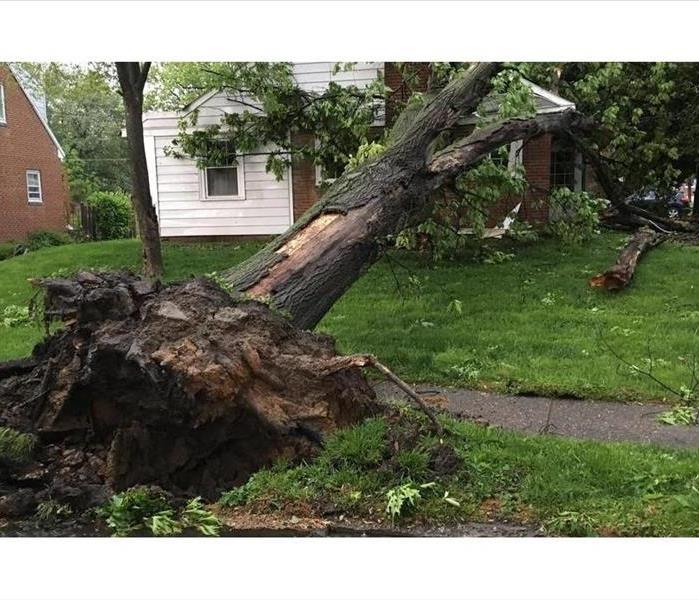How Can Thunderstorms Produce Damaging Winds?
8/9/2019 (Permalink)
Thunderstorms can be damaging in many ways. Thunderstorms come with lightning which poses the risk of getting struck by lightening or of a tree being struck down with lightening. Where a tree falls when it’s struck can be incredibly dangerous and damaging to your home. If it falls into your roof water can get into your home causing not only roof damage but water damage. Thunderstorms can also cause flooding rains, and hail. Strong thunderstorms often produce gusty winds. Sometimes, these winds are even strong enough to cause substantial damage. Like lightening, they can cause trees to fall. However they can also blow down complete structures, tear apart gardens and more.
Thunderstorms themselves are just reflections of currents of wind that move up, down, and around through our atmosphere. An upward moving air current that cools and condenses as it rises is what results in the thunderstorm forming. A downward moving air current develops as the storm matures and precipitation begins to fall. Eventually, a downward moving air current will intercept the ground. When it does, it spreads out, just like how the updraft spreads out when it encounters the stratosphere. The spreading out of the downdraft when it reaches the surface is one reason that gusty winds often accompany thunderstorms.
The second reason gusty winds often accompany thunderstorms is closely connected with the first. As precipitation (moisture) falls through previously unsaturated, dry air, it cools through evaporational cooling. The now cold air becomes much heavier and denser than its surrounding environment and negative buoyancy kicks in. The cold air parcels accelerate towards the ground just like the buoyant air parcels accelerated away from the ground in the updraft. This pocket of cold air will eventually hit the ground and spread out rapidly. This phenomenon can help to intensify bursts of wind associated with downdrafts and, in extreme cases, can result in microbursts- very localized areas of extreme winds that can cause extensive damage.
In extreme cases, a combination of the factors mentioned combined with air temperatures, results in gusty winds that can become very damaging. Winds well over 100mph have been recorded in thunderstorms that have never produced any tornadoes. Straight line winds which lack tornadic rotation, can produce just as much damage as low-moderate strength tornadoes can. It is for this reason that you must watch out if you’re under a severe thunderstorm warning for damaging winds. Thunderstorms can really do some damage!
If you experience storm damage to your home then give us at SERVPRO of Burlington a call at 336/379-1772. We are here 24/7 and 365 to assist with flooding, and water or roof damage caused by storms.
Source: Jack Sillin






 24/7 Emergency Service
24/7 Emergency Service
